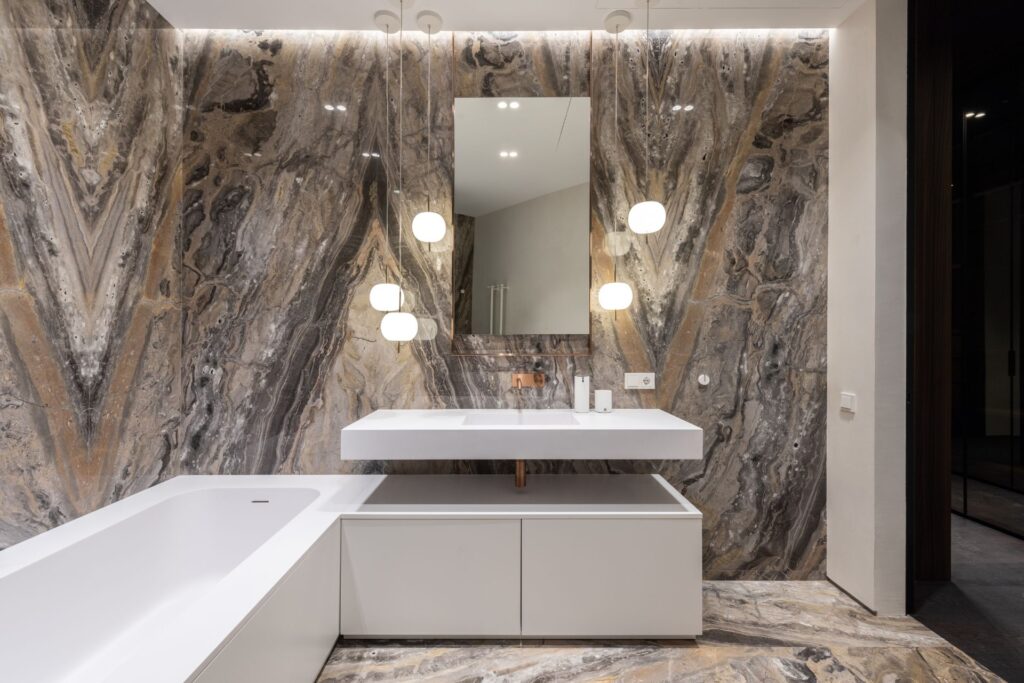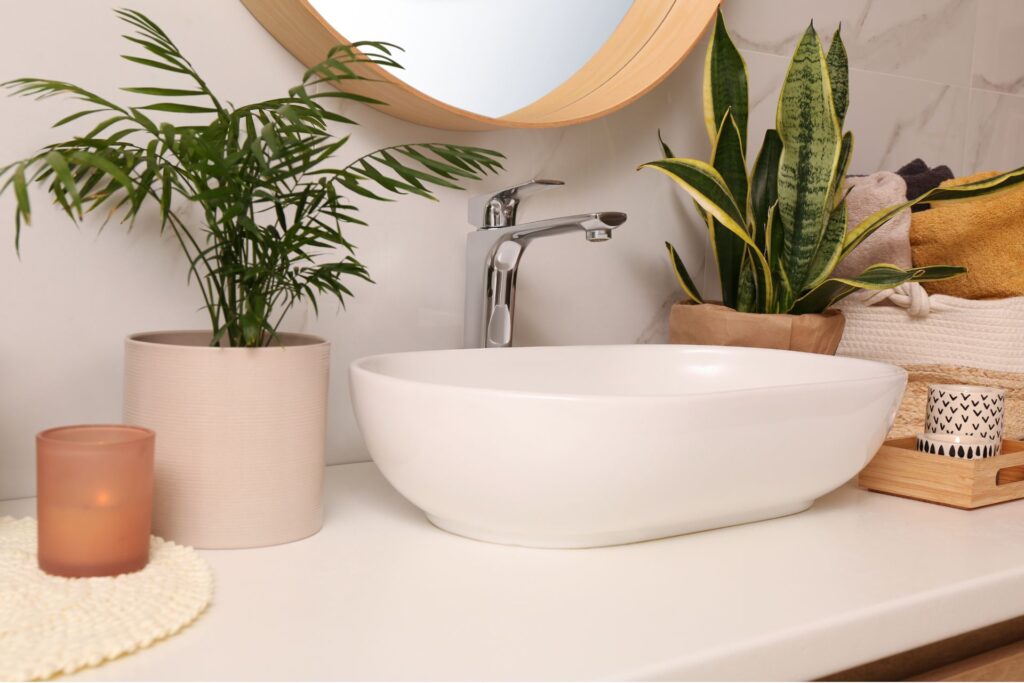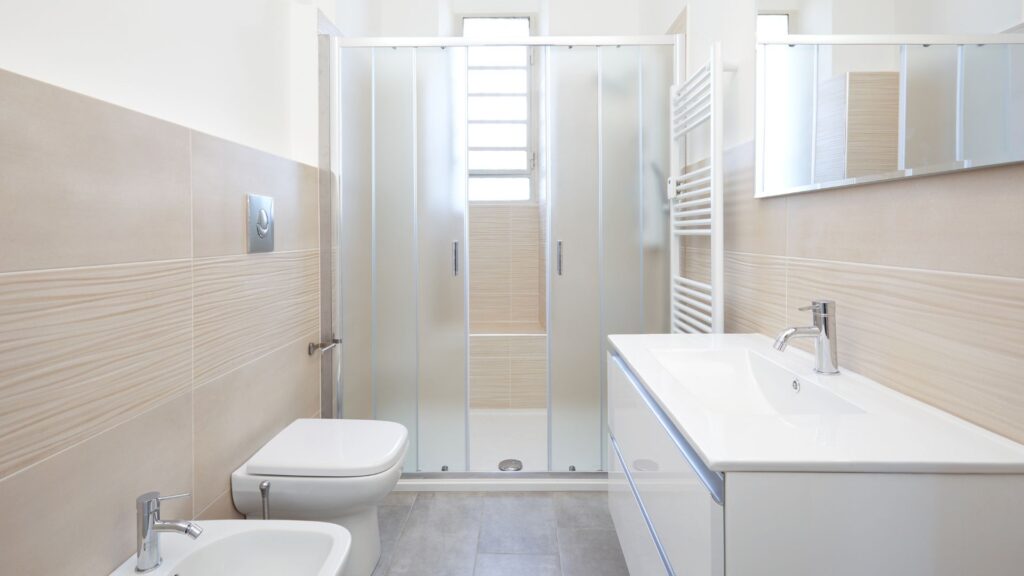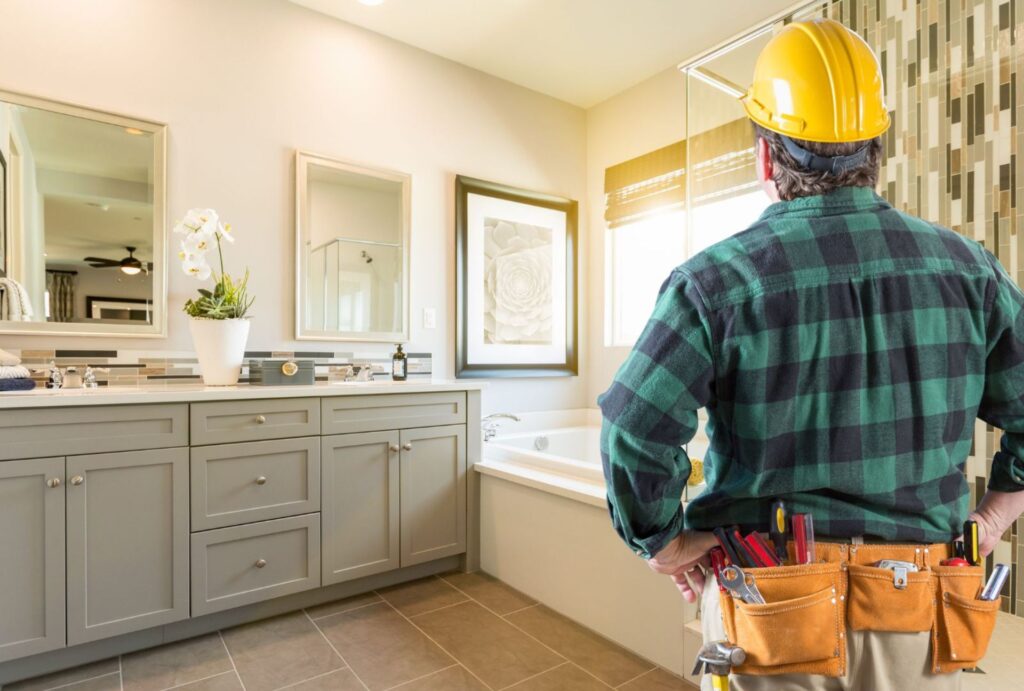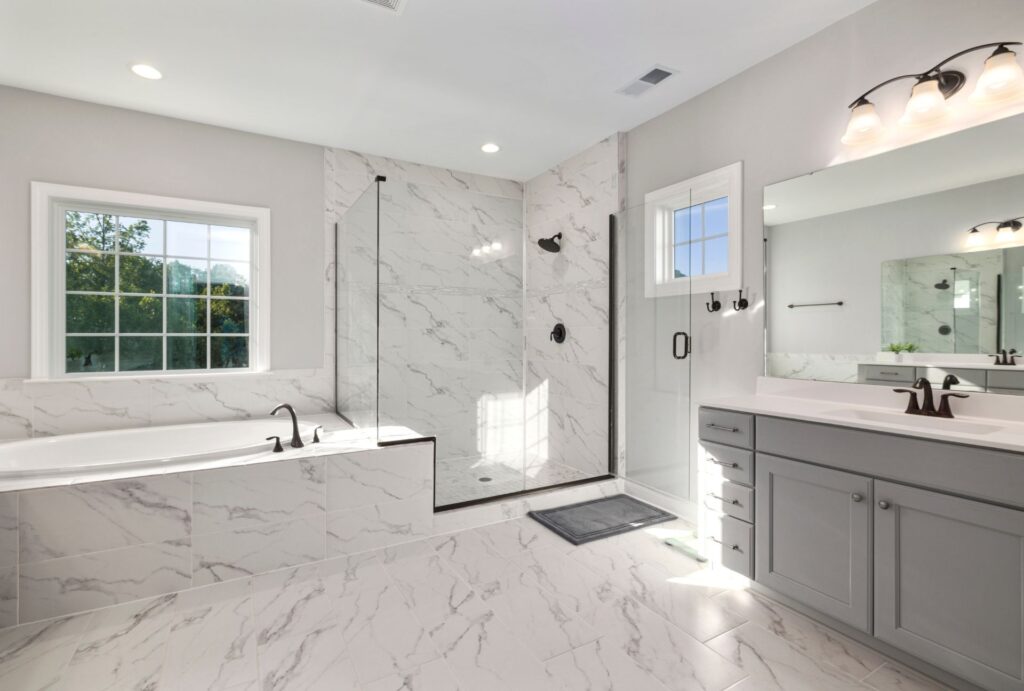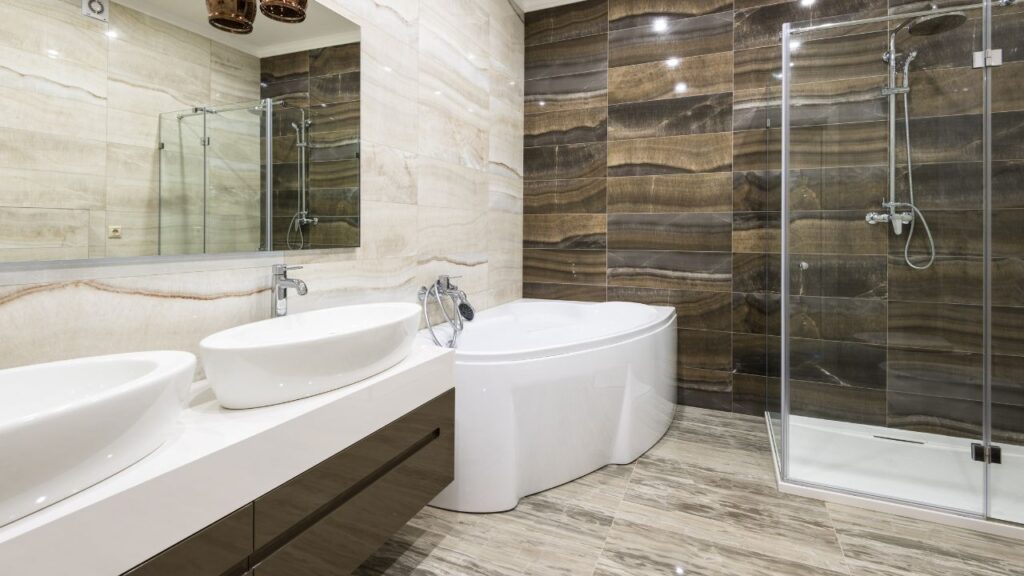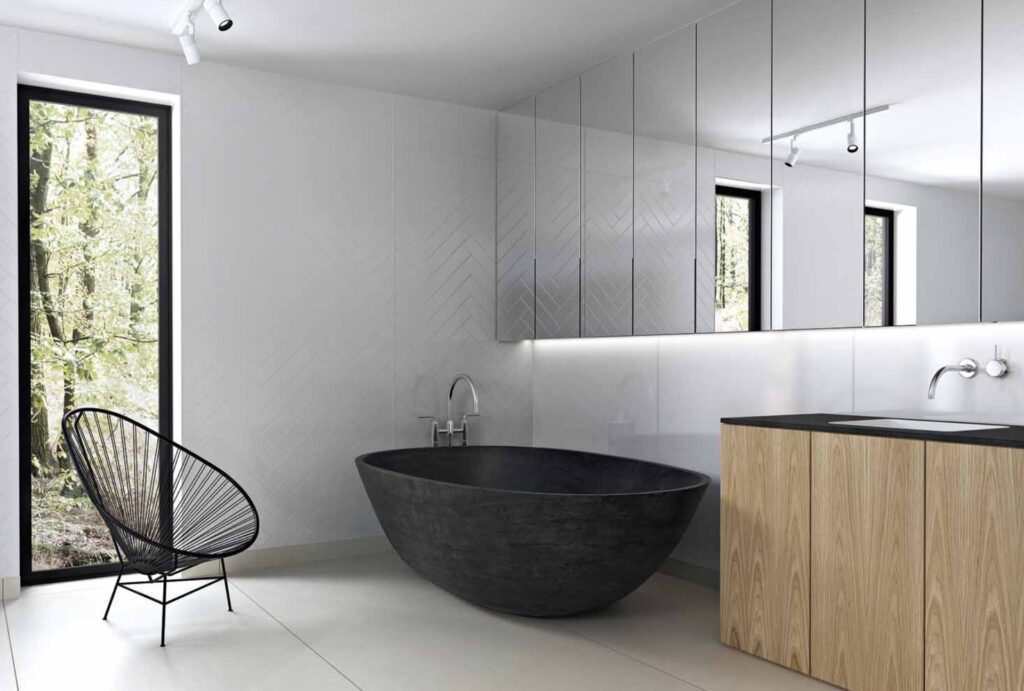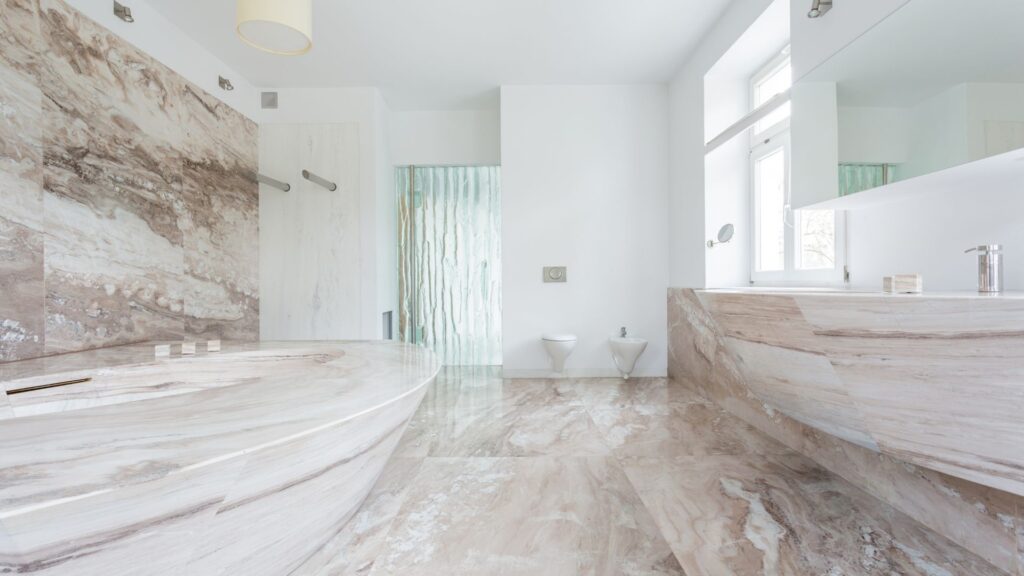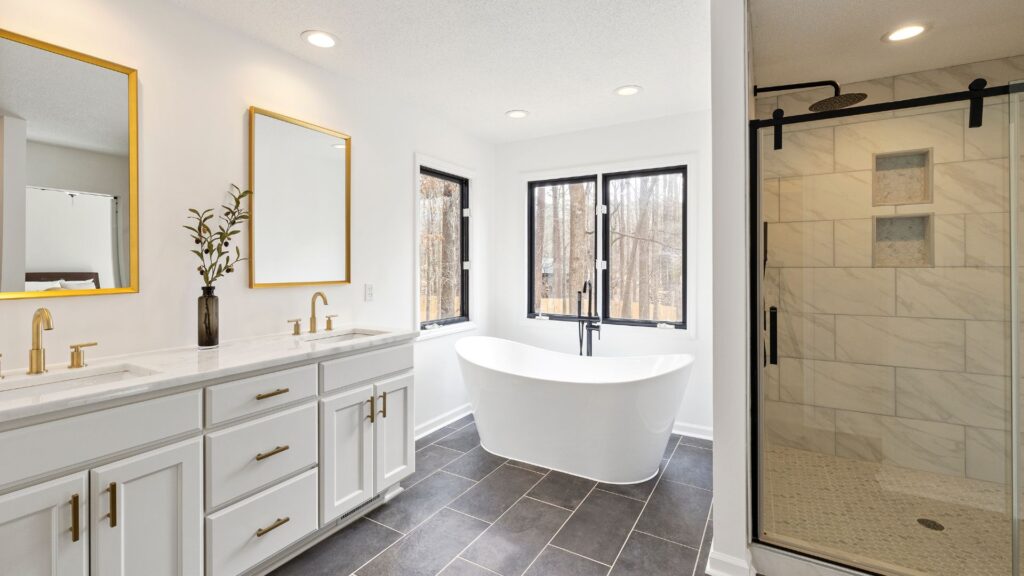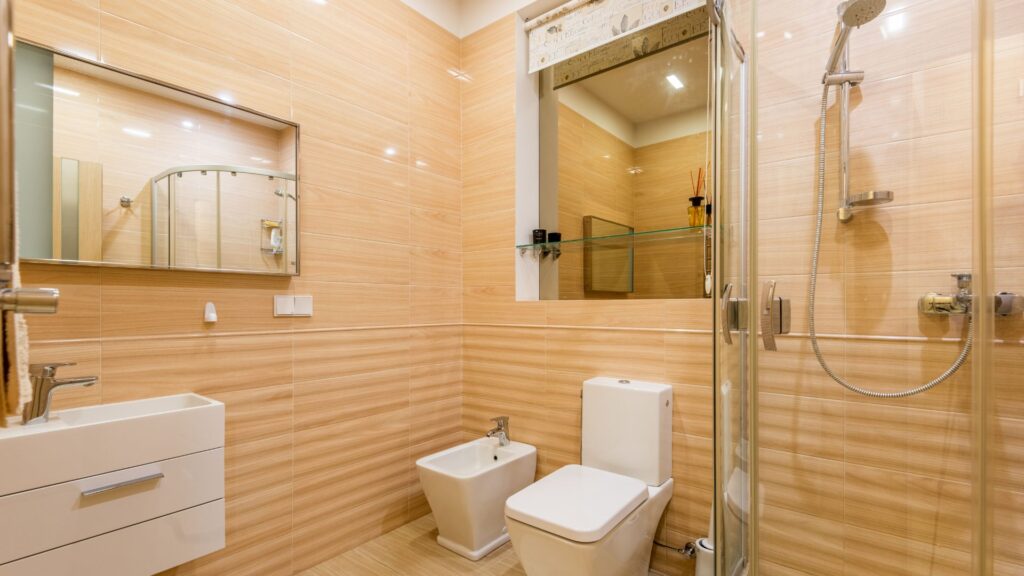Welcome to your ultimate guide on selecting the best material for bathroom walls in New Zealand! When it comes to designing or renovating your bathroom, choosing the right wall material is crucial. Whether you’re concerned about durability, moisture resistance, aesthetics, or budget, the choices you make will impact both the look and longevity of your space. In a country like NZ, where humidity and moisture can wreak havoc on bathrooms, selecting the right wall materials ensures not only a stylish and modern look but also one that stands the test of time. Let’s dive into the best materials that will suit your bathroom and keep it looking fresh and functional for years to come.
The best material for bathroom walls in New Zealand includes options like ceramic and porcelain tiles for their water resistance and durability, acrylic panels for affordability and ease of installation, and natural stone for a luxurious, high-end look. Waterproof plasterboard and moisture-resistant paint are also excellent choices for homeowners seeking cost-effective solutions with good moisture protection.
- Why Choosing The Right Material For Bathroom Walls Matters
- Top Factors To Consider When Choosing Bathroom Wall Materials
- Best Materials For Bathroom Walls In NZ
- Comparison Table Of Bathroom Wall Materials
- Tips For Choosing The Best Material For Your Bathroom
- Real-Life Examples And Inspiration
- Installation Considerations
- Maintenance Tips For Bathroom Wall Materials
- FAQs: About Best Material For Bathroom Walls NZ
- Conclusion
- Find A Professional Bathroom Renovators Near You!
Why Choosing The Right Material For Bathroom Walls Matters
Choosing the right material for bathroom walls is more than just a matter of style; it’s essential to ensuring your bathroom remains functional and long-lasting. Bathrooms are high-moisture environments, and the walls in this space are constantly exposed to steam, splashes, and humidity. The material you select can influence everything from the durability of the walls to the overall aesthetic and maintenance requirements.
Moisture and Humidity Considerations
Bathrooms are notorious for moisture buildup, which can wreak havoc on surfaces that aren’t designed to withstand constant exposure to water and humidity. Choosing the wrong material can result in peeling paint, swollen panels, or, worse, mold and mildew growth. Mold is not only unsightly but can also cause health issues and expensive repairs. For this reason, moisture resistance should be a top priority when selecting bathroom wall materials. Options like tiles, acrylic panels, and moisture-resistant drywall can stand up to the environment, ensuring that your walls remain mold-free and retain their structural integrity over time.
Impact on Aesthetics and Design
The right wall materials don’t just serve a practical function—they also play a significant role in the visual appeal of your bathroom. The material you choose will set the tone for the room’s overall design, whether you’re going for a sleek, modern look or something more traditional and rustic. Glossy tiles, for example, can make a small bathroom appear larger and brighter, while natural stone can bring in a luxurious, spa-like vibe. Paying attention to materials that blend both function and beauty ensures that your bathroom will not only withstand the test of time but also remain a space you enjoy.
Cost and Maintenance
Cost and maintenance are other critical factors in deciding on the best materials for your bathroom walls. While some materials may be more affordable upfront, they can lead to higher long-term costs due to frequent maintenance or the need for replacements. For instance, low-quality vinyl wallpaper might seem like an affordable choice initially, but it can quickly peel or bubble in a humid environment, leading to repairs or the need for early replacement. On the other hand, opting for durable, moisture-resistant materials like ceramic tiles or waterproof panels might have a higher upfront cost but will save you money in the long run by reducing the need for repairs and frequent upkeep. Additionally, easy-to-clean surfaces can cut down on maintenance time, allowing you to enjoy your bathroom without the constant worry of mold or deterioration.
When choosing the right material for your bathroom walls, you must strike a balance between moisture resistance, aesthetic appeal, and long-term cost-efficiency. By carefully considering these factors, you’ll be able to create a space that not only looks great but also performs well under the demands of daily bathroom use.
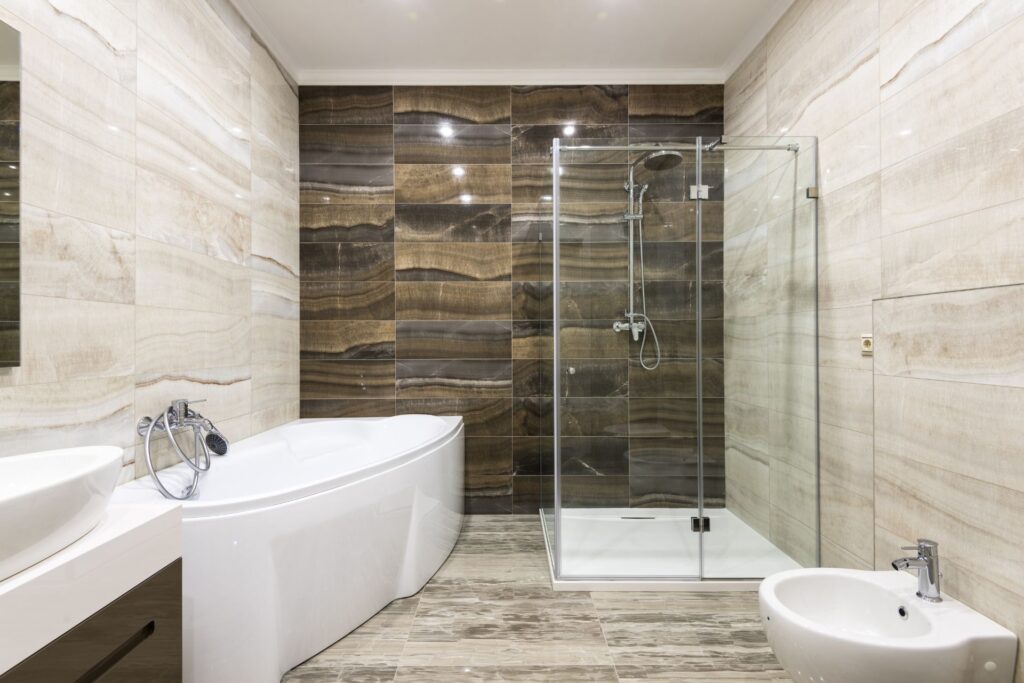
Top Factors To Consider When Choosing Bathroom Wall Materials
When selecting the right materials for your bathroom walls, it’s essential to consider a variety of factors that go beyond just looks. Bathrooms are high-moisture environments, and the materials you choose can significantly affect your bathroom’s longevity, ease of maintenance, and overall aesthetic. Let’s dive into the key factors you need to weigh carefully.
Durability
One of the primary considerations when choosing bathroom wall materials is durability. Bathrooms see a lot of moisture, steam, and temperature fluctuations, which means that not every material will hold up equally well. Ceramic and porcelain tiles are some of the most durable options for a bathroom. These materials are water-resistant, scratch-resistant, and can withstand frequent cleaning without deteriorating. However, other materials like natural stone or even treated wood panels can also be durable, provided they are properly sealed and maintained. Think long-term here: your walls should remain intact and aesthetically pleasing despite the harsh environment.
Waterproofing
Waterproofing is arguably the most crucial factor in selecting bathroom wall materials. Bathrooms are prone to dampness, which can lead to mold, mildew, and structural damage if your walls aren’t adequately protected. Materials like PVC panels, glass, or water-resistant paint are excellent choices because they provide an impermeable barrier against moisture. For tiling, ensure that your grout is sealed to prevent water from seeping in. Waterproofing is not an area to skimp on, as neglecting it could result in costly repairs down the road.
Maintenance
No one wants to spend hours scrubbing walls, so maintenance is a key factor to think about. Some materials, like tiles with smooth finishes or waterproof wall panels, are easy to clean with just a quick wipe-down. In contrast, more porous materials, like unsealed natural stone or textured wallpapers, may require more upkeep and specialized cleaners to keep mold and stains at bay. Consider how much effort you’re willing to invest in keeping your bathroom walls looking their best over time.
Aesthetic Appeal
The aesthetic impact of your bathroom wall materials cannot be overstated. The walls are a significant part of the overall design, contributing to the room’s atmosphere and style. Tiles, for example, offer a wide range of colors, textures, and patterns that can create anything from a modern to a classic look. Natural materials like wood or stone bring warmth and texture, while glass or mirrors can enhance the sense of space and light. Whatever your design goals, the materials you choose should complement the overall aesthetic of your bathroom while still being practical.
Cost
The cost of bathroom wall materials can vary widely, so it’s essential to balance your budget with your needs. Ceramic tiles, for instance, are relatively affordable and widely available, making them a popular choice in New Zealand. On the other end of the spectrum, materials like marble or custom glass panels can be significantly more expensive. When planning your budget, don’t forget to factor in the cost of installation, as some materials require professional expertise. Keep in mind that investing in higher-quality materials can pay off in the long run by reducing the need for repairs or replacements.
Environmental Impact
More and more homeowners are considering the environmental impact of the materials they use in their homes. If sustainability is a priority for you, look for eco-friendly options such as recycled tiles, bamboo panels, or VOC-free paints. These materials are designed to minimize harm to the environment while still providing the durability and waterproofing that bathrooms require. Additionally, some materials like natural stone can be sourced locally in New Zealand, reducing the carbon footprint associated with shipping.
Choosing the right bathroom wall material requires balancing several factors, including durability, waterproofing, maintenance, aesthetic appeal, cost, and environmental impact. By carefully considering each of these aspects, you can select a material that not only looks great but also performs well in your bathroom’s unique environment.

Best Materials For Bathroom Walls In NZ
When it comes to choosing the best materials for bathroom walls in New Zealand, there are several factors to consider. You want something that is durable, water-resistant, and aesthetically pleasing, while also fitting within your budget. Below, we explore some of the most popular options available in the NZ market, along with their benefits, drawbacks, and approximate costs.
Ceramic Tiles
- Overview: Ceramic tiles have long been a popular choice for bathroom walls due to their classic look and practicality. In New Zealand, they are favored for their ability to withstand moisture and humidity, making them a solid option for areas like bathrooms and wet rooms.
- Advantages: Ceramic tiles are highly waterproof, easy to clean, and incredibly durable. They are available in a wide range of colors, patterns, and textures, which means you can customize your bathroom’s look to suit your style. Additionally, ceramic tiles tend to be more affordable than some other premium materials.
- Disadvantages: One of the main downsides to ceramic tiles is that they require grouting. Grout can become a breeding ground for mold and mildew if not properly maintained, which means you may need to regrout or regularly clean to keep it in top condition.
- Cost Range: In New Zealand, the cost of ceramic tiles generally ranges between $40 to $80 per square meter, depending on the quality and design.
Porcelain Tiles
- Overview: Porcelain tiles are similar to ceramic tiles but offer enhanced durability and water resistance. They are made from denser materials and fired at higher temperatures, which makes them more suitable for high-moisture environments like bathrooms.
- Advantages: Porcelain tiles are known for their low porosity, making them resistant to water absorption and staining. They are also incredibly durable, which means they will last for many years even in the most demanding conditions. They are particularly well-suited to showers, splashbacks, and other wet areas.
- Disadvantages: The superior quality of porcelain tiles comes at a price. They are typically more expensive than ceramic tiles and can also be heavier, which may require professional installation.
- Cost Range: In New Zealand, you can expect to pay between $70 and $120 per square meter for porcelain tiles.
Acrylic Panels
- Overview: Acrylic panels are a modern, cost-effective option for bathroom walls in New Zealand. These panels are popular for their ease of installation and low maintenance, making them ideal for homeowners looking for a quick and affordable renovation.
- Advantages: Acrylic panels are lightweight and easy to clean, making them a practical choice for busy households. They are also resistant to mold and mildew, which is crucial for maintaining a hygienic bathroom environment. Additionally, they come in a range of colors and finishes to suit different design preferences.
- Disadvantages: While acrylic panels offer practicality, they are not as customizable as tiles and tend to have fewer design options. They can also be prone to scratches, which may require careful cleaning and maintenance over time.
- Cost Range: The price of acrylic panels in NZ typically ranges from $100 to $150 per panel, depending on the size and finish.
Waterproof Plasterboard (Aquaboard)
- Overview: Waterproof plasterboard, also known as Aquaboard, is a specially designed material for high-moisture areas like bathrooms. It combines the ease of traditional plasterboard installation with added resistance to water and humidity, making it a practical choice for Kiwi homes.
- Advantages: Aquaboard is easy to install and provides strong moisture resistance, making it suitable for bathroom walls and ceilings. It is often used as a base layer beneath tiles or other wall coverings, but it can also be painted or finished with a moisture-resistant paint.
- Disadvantages: Waterproof plasterboard is more expensive than standard plasterboard and may need additional sealing in particularly wet areas, such as around showers or bathtubs.
- Cost Range: In New Zealand, the cost of waterproof plasterboard typically ranges between $40 to $70 per sheet, depending on thickness and brand.
Glass
- Overview: Glass panels offer a sleek and modern look for bathroom walls, creating an elegant and spacious feel. Glass is increasingly popular in contemporary bathroom designs across New Zealand, especially for shower enclosures and feature walls.
- Advantages: Glass is a non-porous material, making it completely waterproof and very easy to clean. It also reflects light, which can make a bathroom appear larger and brighter. Glass is often chosen for its aesthetic appeal and its ability to elevate the overall design of the space.
- Disadvantages: Glass can be expensive and typically requires professional installation, which can add to the overall cost. Additionally, while it is strong, glass is not immune to scratches or breakage, so it needs to be treated with care.
- Cost Range: The cost of glass panels in New Zealand can range from $200 to $400 per square meter, depending on the type of glass and the complexity of the installation.
Vinyl Panels
- Overview: Vinyl panels are a budget-friendly option for bathroom walls, often used in renovation projects where cost is a key consideration. These panels are easy to install and maintain, making them a practical choice for homeowners seeking a simple solution.
- Advantages: Vinyl panels are affordable, waterproof, and available in various patterns and colors. They require minimal maintenance and are resistant to mold and mildew, making them a hygienic choice for bathroom walls.
- Disadvantages: Vinyl panels may not offer the premium look of tiles or natural stone, and over time they can become prone to damage, such as peeling or warping, especially in high-heat areas.
- Cost Range: In New Zealand, vinyl panels usually cost between $80 and $120 per square meter.
Natural Stone
- Overview: Natural stone, such as marble, granite, or travertine, adds a touch of luxury and elegance to any bathroom. It is a premium option favored by those seeking a high-end finish for their bathroom walls in New Zealand.
- Advantages: Natural stone is durable and long-lasting, with each piece offering a unique, one-of-a-kind appearance. It is also highly resistant to wear and tear, making it an excellent choice for homeowners who want a sophisticated and luxurious look.
- Disadvantages: Natural stone is one of the most expensive materials for bathroom walls, and it requires regular sealing and maintenance to prevent staining and water damage. It is also heavier than other materials, which may necessitate professional installation.
- Cost Range: In New Zealand, natural stone can cost anywhere from $200 to $500 per square meter, depending on the type and quality of the stone.
Painted Walls with Moisture-Resistant Paint
- Overview: Using moisture-resistant paint on bathroom walls is a cost-effective way to refresh the space. This option is versatile and allows for easy updates, making it a popular choice for budget-conscious homeowners in New Zealand.
- Advantages: Moisture-resistant paint is affordable, easy to apply, and can be combined with other materials like tiles or panels for a more customized look. It also allows for quick changes in color or design without the need for a full renovation.
- Disadvantages: Painted walls require regular maintenance and may not be as durable as tiles or panels in high-moisture areas. Over time, the paint may peel or wear down, especially if the bathroom is not well-ventilated.
- Cost Range: The cost of moisture-resistant paint in NZ typically ranges between $20 to $50 per liter, with coverage depending on the size of the bathroom and the number of coats applied.
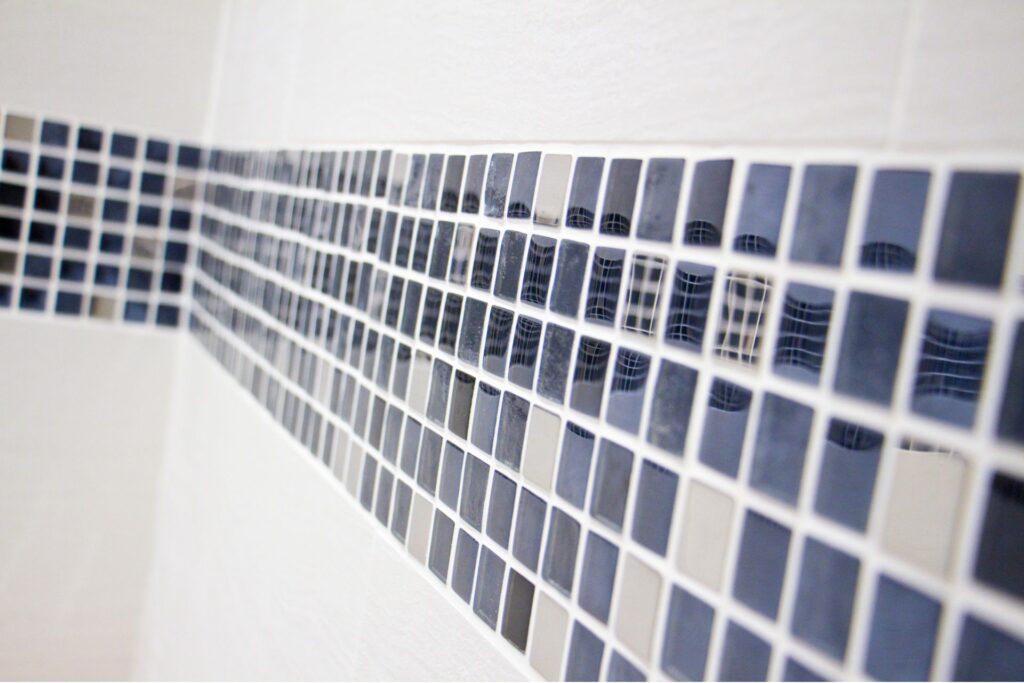
Comparison Table Of Bathroom Wall Materials
When considering materials for bathroom walls, it’s important to evaluate several key factors, such as durability, water resistance, aesthetics, cost, and maintenance requirements. Comparing these factors helps homeowners make informed decisions that best suit their needs, budget, and design preferences. Below is a breakdown of some of the most popular bathroom wall materials.
Ceramic Tiles
Ceramic tiles are a popular choice for bathrooms due to their excellent durability and water resistance. With a wide variety of colors and patterns, ceramic tiles offer flexibility in design, allowing homeowners to customize their space. While ceramic tiles are relatively affordable, they do require occasional maintenance, such as re-grouting, to keep them looking fresh.
Porcelain Tiles
Porcelain tiles are similar to ceramic but offer even greater durability and water resistance. They provide a luxurious, high-end aesthetic that enhances the overall look of a bathroom. Although more expensive than ceramic tiles, porcelain requires minimal maintenance and is a worthwhile investment for homeowners seeking a long-lasting, stylish option.
Acrylic Panels
Acrylic panels are a modern, sleek option for bathroom walls. They are moderately durable and provide good water resistance, making them a practical choice for contemporary designs. Acrylic panels are more affordable than porcelain and natural stone and are easy to maintain with regular cleaning. However, they may need polishing from time to time to retain their glossy appearance.
Glass Panels
Glass panels bring an elegant and bright look to bathrooms, enhancing natural light and creating a sense of openness. Glass is highly water-resistant but tends to be more expensive than other materials. Maintenance involves regular cleaning to prevent streaks and water spots, which can affect the polished appearance of the glass.
PVC Panels
PVC panels are a budget-friendly option that provides basic water resistance. They are simple in appearance and not as durable as other materials, but they are extremely easy to maintain, requiring little more than a quick wipe-down. For homeowners seeking a cost-effective and low-maintenance solution, PVC panels are a practical choice, especially in utility bathrooms or secondary spaces.
Natural Stone
Natural stone is a premium material that offers a rich, earthy aesthetic, making it an excellent choice for luxury bathrooms. However, it requires significant upkeep, including regular sealing to protect against moisture. The high cost and maintenance demands of natural stone may be prohibitive for some, but for those who desire a unique, high-end look, it’s a striking option.
Painted Drywall
Painted drywall is one of the most affordable materials for bathroom walls, but it is the least durable in wet environments. While it offers versatility in terms of color and design, it tends to require more frequent maintenance, particularly in areas prone to moisture. Peeling, bubbling, and the need for regular repainting are common issues with painted drywall in bathrooms.
Human Insight
Choosing the right material for your bathroom walls is about finding the right balance between style, function, and long-term maintenance. High-end materials like porcelain and natural stone offer impressive durability and beauty but come at a higher cost and often require more upkeep. On the other hand, budget-friendly materials like PVC and painted drywall are easy to install and maintain but may not withstand the moisture and wear that bathrooms experience over time.
Homeowners should carefully weigh their priorities, considering how much they are willing to invest in both the initial installation and the ongoing maintenance of their bathroom walls. A thoughtful comparison of these materials ensures that you select an option that aligns with your lifestyle, budget, and design preferences, helping you create a bathroom that is both stylish and functional for years to come.

Tips For Choosing The Best Material For Your Bathroom
Choosing the right materials for your bathroom is a crucial step in any renovation or new build. It can impact not only the aesthetics of your space but also its functionality and durability. Here are some key factors to consider when selecting materials, ensuring that you get the best value for your investment while also creating a space that suits your needs.
Consider the Size of the Bathroom
When planning the materials for your bathroom, the size of the room should be a primary consideration. Smaller bathrooms, for example, can benefit greatly from materials that enhance the feeling of space. Light-colored materials, such as glass or acrylic panels, can reflect light and create an illusion of a larger, more open area. Glass shower doors, for instance, can replace traditional shower curtains, making the space feel less confined. Similarly, opting for slim-profile fixtures and fittings can free up floor space, contributing to a more spacious and airy environment. Think about how the material choices interact with the space you have, ensuring that they not only look good but also function well within the room’s constraints.
Budget Considerations
Budgeting is always a significant factor when choosing materials, but it’s important to remember that balance is key. While you might be tempted to choose high-end, premium materials, it’s essential to assess how they will impact your overall budget. Often, there are more affordable alternatives that offer both practicality and aesthetics without breaking the bank. For instance, instead of choosing expensive marble, you might opt for porcelain tiles that mimic the look of natural stone at a fraction of the cost. Similarly, vinyl or laminate flooring can offer a stylish yet budget-friendly solution while being moisture-resistant and easy to maintain. Always consider how different materials align with your financial limits, ensuring that you achieve the desired look while staying within your budget.
Blend of Materials
Mixing and matching materials in different areas of your bathroom can create a balanced blend of style, functionality, and cost-efficiency. For example, consider using durable and water-resistant materials like tiles or stone in high-moisture areas such as around the shower or bath. Meanwhile, for less exposed areas, moisture-resistant paint or wall panels could provide a more economical yet stylish finish. The combination of materials can also allow you to highlight specific areas of your bathroom. For instance, using feature tiles behind the vanity can create a focal point without the need to tile the entire room, thereby saving costs while still providing a high-end look. A thoughtful blend of materials ensures that you optimize both the visual appeal and performance of your bathroom space.
Climate Considerations
New Zealand’s unique climate conditions, characterized by high humidity in certain regions, can affect the longevity of bathroom materials. In areas prone to dampness, such as coastal regions, it’s critical to choose materials that can withstand moisture and temperature fluctuations. For instance, using moisture-resistant materials such as porcelain tiles, waterproof vinyl flooring, or fiber cement panels can help prevent issues like mold and warping. Furthermore, selecting materials that are suited for varying temperatures—such as heat-resistant tiles or tempered glass—can extend the lifespan of your bathroom finishes. The right material choices, based on your local climate, will ensure that your bathroom remains in excellent condition for years to come, reducing the need for costly repairs and replacements.
By carefully considering the size of your bathroom, your budget, the potential for blending materials, and the impact of New Zealand’s climate, you can make informed decisions that will ensure your bathroom is both functional and visually appealing. Every bathroom is unique, so take the time to assess your specific needs and make choices that work best for your space.

Real-Life Examples And Inspiration
One of the best ways to gain insight and inspiration for your bathroom renovation is by looking at real-life examples. Below are three distinct projects that showcase a variety of styles, materials, and budget levels, giving you a clear picture of what’s possible for your own space.
Example 1: A Modern Bathroom in Auckland Featuring Porcelain Tiles and Glass
In Auckland, a modern bathroom renovation project was undertaken with a focus on clean lines, minimalism, and a fresh aesthetic. The homeowners opted for large-format porcelain tiles on both the floor and walls, which added a sleek, uniform look to the space. The use of neutral tones, primarily greys and whites, helped to create a sense of calm and spaciousness.
The centerpiece of the bathroom was a frameless glass shower enclosure, allowing the design to flow seamlessly from one area to the next. The glass helped make the space feel open, while still providing a clear divide between wet and dry areas. Complementing this was a floating vanity with a wall-mounted faucet, further enhancing the modern look.
This renovation project demonstrates how porcelain tiles and glass can work together to create a bathroom that feels both elegant and functional. For homeowners in urban areas like Auckland, where space might be at a premium, this approach helps maximize the perception of space without sacrificing style.
Example 2: A Budget-Friendly Bathroom Renovation in Wellington Using Acrylic Panels and Painted Walls
For those looking to renovate on a budget, this Wellington bathroom offers plenty of inspiration. Instead of using costly materials like natural stone or high-end tiles, the homeowners chose acrylic panels for the shower walls. These panels are not only affordable but also easy to clean and maintain, making them an excellent choice for busy families.
To keep costs down further, the rest of the walls were painted with moisture-resistant paint in a light color, giving the room a bright and airy feel. The flooring was a simple, water-resistant vinyl, which is both durable and cost-effective.
The finishing touches included a freestanding vanity with open shelving, offering ample storage without the hefty price tag of custom cabinetry. This project proves that even with a limited budget, you can create a functional and stylish bathroom that suits your needs.
Example 3: A Luxury Bathroom in Queenstown with Natural Stone Walls
On the opposite end of the spectrum, a luxury bathroom renovation in Queenstown showcases the opulence that can be achieved with high-end materials. The highlight of this bathroom is the natural stone walls, which add texture, warmth, and a touch of nature to the space. The stone was locally sourced, ensuring that the bathroom not only looked stunning but also had a connection to the surrounding landscape.
The freestanding bathtub, set against a stone feature wall, became the focal point of the room. The stone created a dramatic backdrop, while the freestanding tub added to the spa-like atmosphere. Heated floors and towel racks completed the experience, ensuring that comfort was as much a priority as aesthetics.
This renovation is perfect for homeowners looking to make a bold statement with their bathroom. It shows how investing in premium materials like natural stone can transform a standard bathroom into a luxurious retreat.
These three real-life examples demonstrate the vast possibilities available when renovating a bathroom in New Zealand. Whether you’re aiming for a modern, budget-friendly, or luxury design, there are materials and techniques that can help bring your vision to life. By studying these examples, you can find inspiration and make informed decisions that suit your personal style, budget, and the unique conditions of your home.
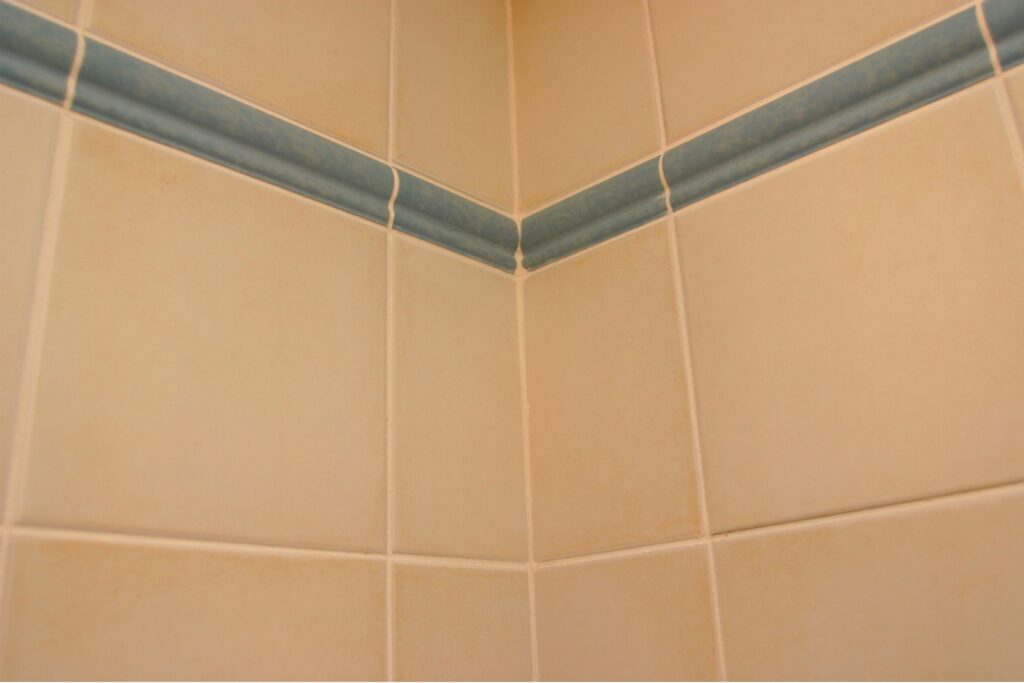
Installation Considerations
When planning a bathroom renovation, one of the crucial aspects to consider is the installation of the wall materials. The decision between doing it yourself (DIY) or hiring a professional can significantly impact both the final outcome and your budget. Additionally, understanding the typical costs associated with installing different materials in New Zealand is essential for effective planning.
DIY vs. Hiring a Professional
When it comes to installing bathroom wall materials, you have the option to take on the project yourself or hire a professional. Both approaches have their own advantages and disadvantages, which should be carefully weighed depending on your skills, time availability, and desired results.
DIY Installation
Many homeowners in New Zealand opt for a DIY approach to save money and feel more connected to their renovation projects. One of the main advantages of doing it yourself is the potential cost savings. By eliminating labor costs, you can allocate more of your budget toward higher-quality materials. Additionally, DIY projects often provide a sense of satisfaction, knowing that you’ve contributed directly to your home improvement.
However, DIY bathroom wall installations come with challenges. Bathrooms are moisture-prone areas, and improper installation can lead to water damage, mold growth, and structural issues down the line. Mistakes in measurement, cutting, or sealing may result in costly repairs. If you’re not familiar with the tools and techniques required for certain materials, such as tiling or waterproofing, DIY installation could end up being more expensive in the long run due to the need for corrections.
Hiring a Professional
On the other hand, hiring a professional ensures that the job is done correctly and efficiently. Professionals in New Zealand have experience with a wide range of bathroom wall materials, from tiles to waterproof panels, and are equipped to handle the challenges posed by moisture and plumbing. They are also familiar with local building codes and standards, ensuring compliance throughout the renovation process.
The downside to hiring a professional is the cost. Labor can make up a significant portion of your renovation budget, particularly for more complex installations. However, the peace of mind that comes with knowing the job is done right often outweighs the expense. If time is a concern, a professional can complete the installation far quicker than a DIY effort, allowing you to enjoy your renovated bathroom sooner.
The choice between DIY and hiring a professional depends on your budget, skills, and the level of quality you want to achieve. If you have experience and are confident in your abilities, DIY might be a viable option. However, if precision, durability, and long-term satisfaction are your priorities, a professional installer is often worth the investment.
Typical Installation Costs
Installation costs for bathroom wall materials in New Zealand vary depending on the type of material you choose and whether you opt for DIY or professional installation. Here’s a general overview of what you can expect.
- Tiles: Tiling is a popular choice for bathroom walls due to its durability and water resistance. The cost of installing tiles typically ranges from $70 to $120 per square meter for labor alone. If you include the cost of the tiles themselves, prices can increase based on the type, style, and quality. DIY tiling can save on labor costs but requires skill and precision to achieve a professional finish.
- Waterproof Panels: Waterproof wall panels are an increasingly popular alternative to tiles, offering a seamless and easy-to-clean surface. The cost of professional installation for panels typically ranges from $50 to $100 per square meter, depending on the material and complexity of the installation. Panels are generally easier to install than tiles, making them a more accessible option for DIY enthusiasts, though professionals will ensure a flawless finish.
- Paint and Plasterboard: For a more straightforward and budget-friendly option, using moisture-resistant plasterboard with a coat of waterproof paint is common. Installation costs are lower, with labor fees ranging from $30 to $50 per square meter. This approach is ideal for DIYers with limited experience, as it requires fewer specialized skills and tools compared to tiling or panel installation.
When calculating your total costs, remember to include any additional expenses such as waterproofing materials, adhesive, grout, or trims. The complexity of your bathroom layout can also affect labor costs, as irregular shapes, niches, or fittings may require extra time and expertise to navigate.
Whether you choose to DIY or hire a professional, understanding the typical costs for bathroom wall installations in New Zealand can help you budget effectively and make informed decisions.
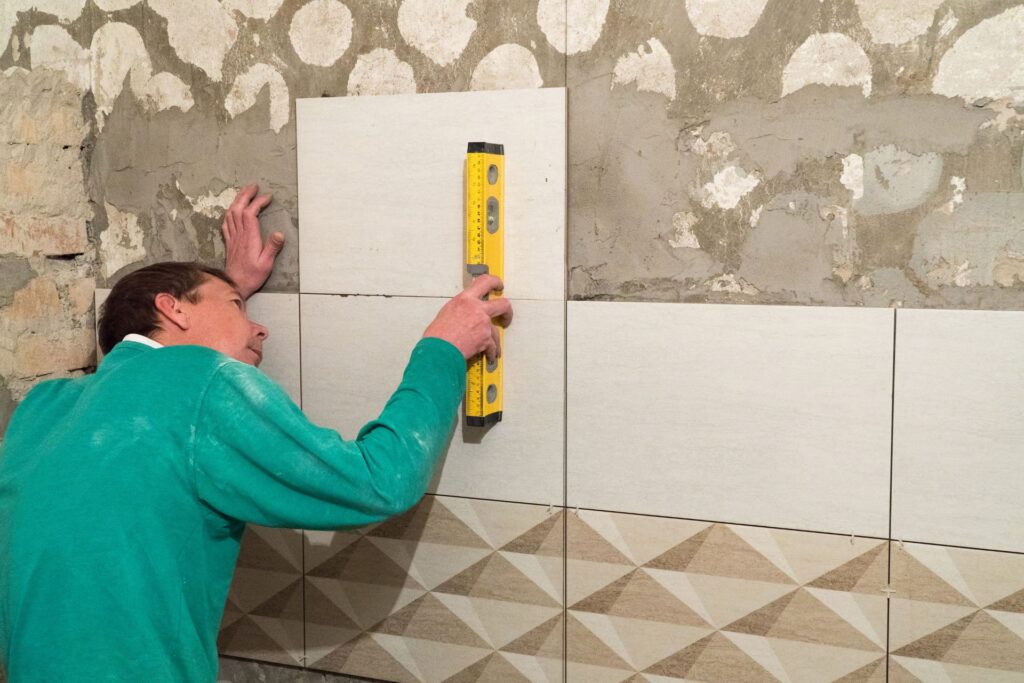
Maintenance Tips For Bathroom Wall Materials
Maintaining bathroom walls is crucial to ensuring that they remain functional, attractive, and free from common issues such as mold, mildew, and water damage. Each type of wall material in a bathroom requires specific care to keep it in optimal condition. Below, I’ll break down practical maintenance tips for various common bathroom wall materials, ensuring your walls stay fresh and durable for years to come.
Tiles: How to Keep Them Pristine
Tiles are one of the most popular choices for bathroom walls due to their durability and resistance to moisture. However, maintaining their shine and functionality requires regular care.
1. Regular Cleaning: To prevent soap scum and grime buildup, tiles should be cleaned at least once a week. A mild detergent or a vinegar-and-water solution works well for most tiles. Avoid harsh chemicals that could wear down the grout or cause discoloration over time.
2. Resealing the Grout: The grout between your tiles is a porous material that can absorb water and dirt, leading to staining or mold growth if not properly maintained. It’s recommended to reseal the grout every 6 to 12 months, depending on the type of tiles and the humidity levels in your bathroom. A good grout sealer will keep moisture and stains at bay.
3. Mold and Mildew Prevention: Keeping the bathroom well-ventilated reduces the likelihood of mold and mildew forming. After showers or baths, use a squeegee to remove excess moisture from tiled walls.
Glass Walls: Keep Them Spotless and Clear
Glass walls or partitions are often used in modern bathroom designs for their sleek, minimalist appeal. Keeping them free of streaks and watermarks can be a challenge, but the right maintenance routine makes all the difference.
1. Daily Wipe Down: After each use, wiping down glass walls with a squeegee or microfiber cloth prevents water spots and soap residue buildup. Doing this immediately after a shower when the glass is still warm helps prevent streaking.
2. Weekly Deep Clean: Once a week, clean the glass thoroughly using a non-abrasive cleaner specifically designed for glass. Vinegar diluted with water is a natural and effective option. Avoid using rough sponges or brushes that could scratch the surface.
3. Sealing Glass: Many glass walls come with a protective sealant that helps prevent water stains and mineral deposits. If your glass is unsealed, consider applying a glass sealer every six months to make future cleaning easier and protect the clarity of the glass.
Moisture-Resistant Painted Walls: Keep the Color Fresh
For painted walls, especially those with moisture-resistant paint, regular upkeep is key to ensuring the paint continues to resist the challenges of a damp environment.
1. Routine Cleaning: Painted walls, particularly those with moisture-resistant properties, should be gently wiped down with a damp cloth and mild soap every month. This will remove any dirt, grease, or mildew that may accumulate over time. Be cautious with scrubbers, as harsh scrubbing can cause the paint to peel or wear away.
2. Touching Up and Repainting: Even the most resilient paint will eventually need touching up. Typically, moisture-resistant paint can last several years before it requires a fresh coat, but areas around the shower or sink may need more frequent touch-ups. It’s wise to keep a small amount of the original paint on hand for quick fixes.
3. Ventilation and Moisture Control: To extend the life of your painted walls, ensure that your bathroom is well-ventilated. Installing a good exhaust fan and using it regularly will reduce the risk of moisture buildup, which can cause the paint to bubble or peel.
Proper maintenance of bathroom wall materials is essential to ensuring they remain beautiful and durable for years to come. By establishing a regular cleaning and maintenance routine, you can significantly extend the lifespan of your bathroom’s walls while also preventing costly repairs or replacements down the road. Regular resealing, cleaning, and attention to ventilation are small investments of time that will pay off in long-term durability and aesthetic appeal.
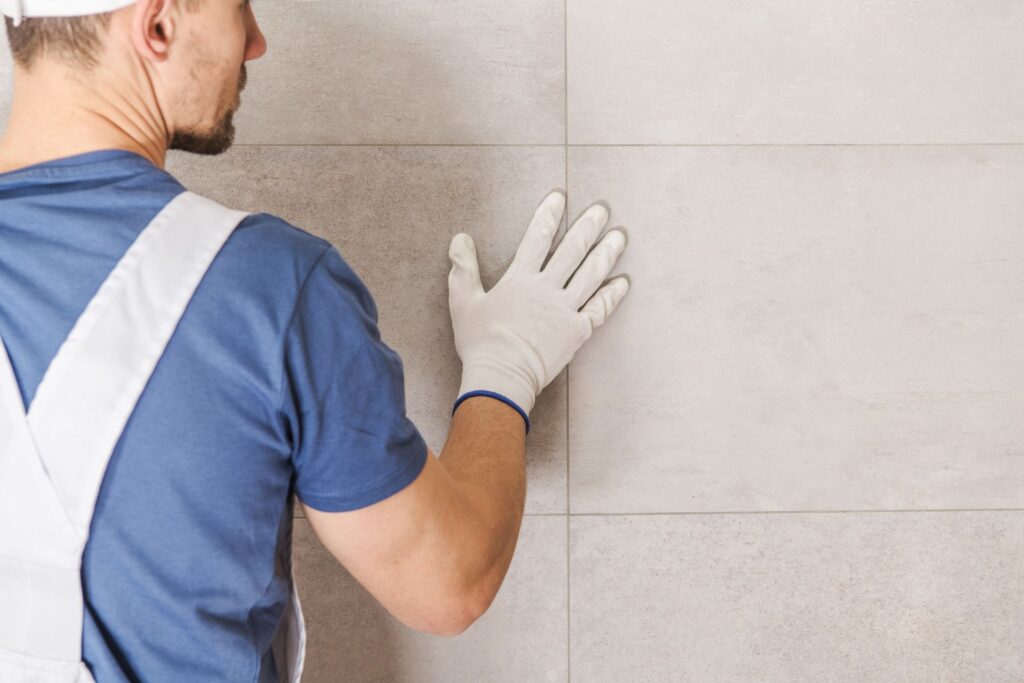
FAQs: About Best Material For Bathroom Walls NZ
Conclusion
In conclusion, when selecting the best materials for bathroom walls in NZ, it’s essential to strike a balance between durability, aesthetics, and cost. From moisture-resistant options like tiles and acrylic panels to budget-friendly choices such as paint and vinyl, understanding your priorities is key to making an informed decision. Take the time to assess your needs, lifestyle, and budget to ensure you choose wisely. For more home improvement tips or to get personalized recommendations tailored to your renovation plans, don’t hesitate to consult with a local professional who can guide you toward the best solution for your bathroom project.
Find A Professional Bathroom Renovators Near You!
- Bathroom Renovations Alexandra
- Bathroom Renovations Alexandra, Clyde & Cromwell
- Bathroom Renovations Auckland
- Bathroom Renovations Cambridge
- Bathroom Renovations Central Otago
- Bathroom Renovations Christchurch
- Bathroom Renovations Clyde
- Bathroom Renovations Cromwell
- Bathroom Renovations East Auckland
- Bathroom Renovations Hamilton
- Bathroom Renovations Hastings
- Bathroom Renovations Hawkes Bay
- Bathroom Renovations Invercargill
- Bathroom Renovations Kapiti Coast
- Bathroom Renovations Levin
- Bathroom Renovations Lower Hutt
- Bathroom Renovations Napier
- Bathroom Renovations Nelson
- Bathroom Renovations New Plymouth
- Bathroom Renovations North Shore
- Bathroom Renovations Palmerston North
- Bathroom Renovations Porirua
- Bathroom Renovations Queenstown
- Bathroom Renovations South Auckland
- Bathroom Renovations Te Awamutu
- Bathroom Renovations Upper Hutt
- Bathroom Renovations Wanaka
- Bathroom Renovations Warkworth
- Bathroom Renovations Wellington
- Bathroom Renovations West Auckland
- Bathroom Renovations Kerikeri
- Bathroom Renovations Paihia
- Bathroom Renovations Tauranga
About the Author:
Mike Veail is a recognized digital marketing expert with over 6 years of experience in helping tradespeople and small businesses thrive online. A former quantity surveyor, Mike combines deep industry knowledge with hands-on expertise in SEO and Google Ads. His marketing strategies are tailored to the specific needs of the trades sector, helping businesses increase visibility and generate more leads through proven, ethical methods.
Mike has successfully partnered with numerous companies, establishing a track record of delivering measurable results. His work has been featured across various platforms that showcase his expertise in lead generation and online marketing for the trades sector.
Learn more about Mike's experience and services at https://theleadguy.online or follow him on social media:

